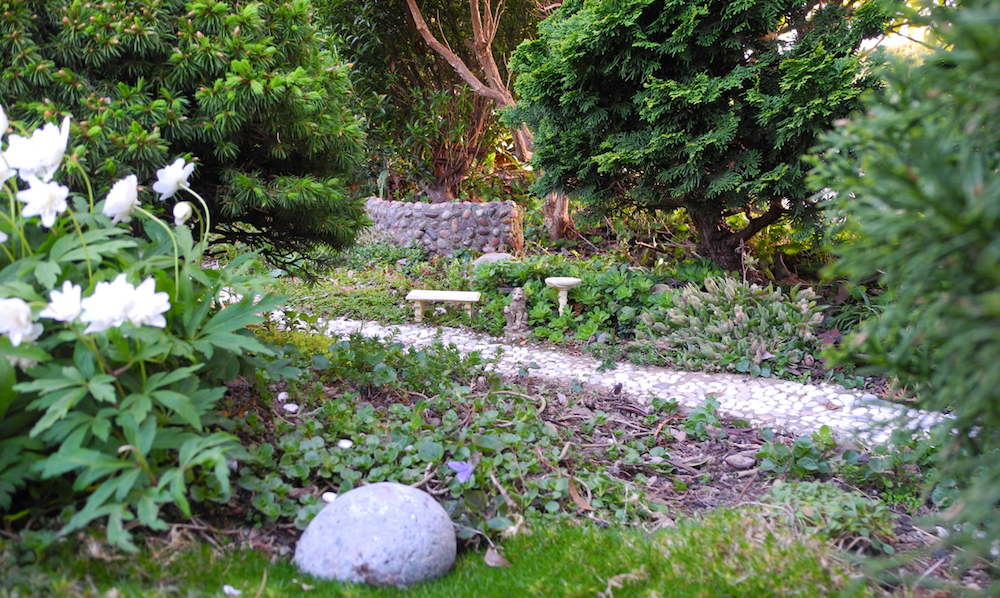
The ‘Garden” Part of Miniature Gardening
The gardening in miniature niche is, quite possibly with no pun intended, the biggest idea to happen to the garden industry in ages. You’ll find designated miniature departments in many nurseries and garden centers these days but, in my opinion, this new way to garden has been completely overshadowed by gimcrack, gewgaws and tchotchkes — or future landfill — as I like to call it.
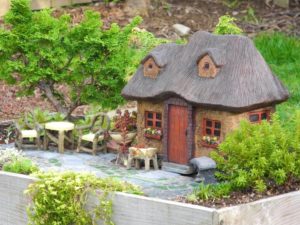
If you’re in the garden business for the churn-andburn, to only sell, sell, sell, make money on whatever is trending and don’t care about your customers’ experience, you might not want to read any further.
If you are in this business because you care about your customers and love sharing and teaching about gardening and plants, keep reading.
Define Our Terms
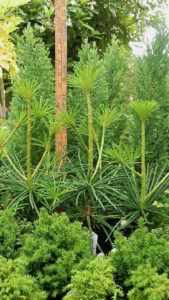
Gimcrack, gewgaws and tchotchkes basically mean the same thing: small, cheap, showy and worthless.
By these antique terms, I mean the endless types of fairies, the crudely made fairy furniture, the countless styles of gaudy log or fairy houses and all the tchotchkes that the gift industry has thrown at the consumer during this trend. Some fairy manufacturers have missed the entire point and are only in it for the churn-and-burn-landfill — I digress, but stay with me.
So why did this explosion of gewgaws happen when the initial trend started as a new way to garden? Because it’s much easier to manufacture a fantasy miniature than a realistic, in-scale miniature (and I’ll tell you why you need the realism in a minute.)
So, the gift industry ran with the fairy idea and now all the craft, dollar and garden center stores are full of the discounted stuff and no one gives any thought to the garden part of “fairy gardening.” But take heart: anyone can sell the houses and accessories, but not many people can sell the plants — and that’s where you come in.
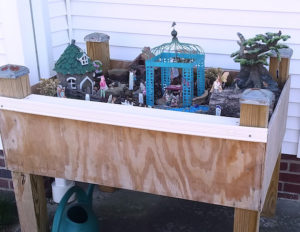
Now, the difference between a “miniature garden” and a “fairy garden” is the garden. To say “miniature fairy garden” is redundant because fairies are miniature. But once you introduce the houses, accessories and other childlike ideas to the customer, the focus goes off growing a garden and onto the other products.
So, your typical fairy garden customer will load up on the accessories, then grab a plant or two and head for the cashier.
It’s no longer about the garden anymore and the customer’s “fairy garden” ends up to be a planter full of soil, loaded with a fairy scene, and that plant or two that they remembered to buy is tucked into the back of the scene at the last minute.
In a couple of weeks, they’ll wonder why their plant died.
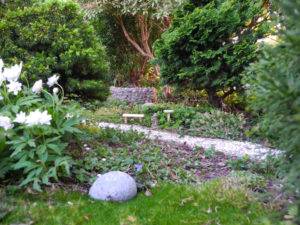
And here’s the crux; there is no thought to garden design (which is a lot of fun in miniature), no learning to choose the right plant for the right place, (so the customer is successful and wants to do it again), and no way to teach them a new way to grow plants so they keep coming back to you for more. Eventually the houses and accessories get left in the dirt, fade in the sun, get broken and beat up and eventually become landfill. Yay for fairy gardening, huh?
But gardening in miniature is just that: gardening on a small scale. There needs to be a separation between the two because a miniature garden doesn’t need all the gimcrack; it’s just growing plants in a different way with a realistic accessory and patio to complete the scene and tell the scale. Less is more. Keep it simple.
The Quest for Enchantment
Why people get sucked into the fairy gardening is the quest for enchantment, but they’ll never get it with the typical fairy garden accessories. They want their gardens to look like the cracker-jack miniature gardens they see on Pinterest and Facebook.
Fantasy houses and fairy accessories are not what create the enchantment; it’s the realism. The realism suspends the viewer’s reality if only for a moment. Suspended reality equals enchantment. This is why we love movies because it takes us away from our reality and creates another, alternate reality that we can believe for as long as the movie lasts.
We can achieve this same feeling with our gardening in miniature only if they are realistic. Get a little tree that looks like a full-sized tree, pair it with some small-leafed plants and put a realistic Adirondack chair on the wee patio and bingo! Watch the smiles on people’s faces as they realize that it really is a true miniature garden.
This is why people get hooked on this hobby. It is the ability to create a tiny, realistic living world in a couple of hours. It’s so satisfying and rewarding, they want to do it again and again.
The Plants
At the turn of century, when I started to define the idea of gardening in miniature, how to package it for the marketplace and out how to build a miniature garden that will last, I didn’t have any “fairy garden plant” section or a “miniature garden department” to shop from, and I didn’t need one.
All the plants were right there in front of me at Swanson’s Nursery, where I was working at the time, albeit in different parts of the store. I simply went around the nursery and got my list together, and you can too. You don’t need all of these, just a few for the customer to select from:
- Miniature and slow-growing dwarf conifers
- Alpine plants
- Rockery plants (small-leafed and slow growing.)
- Small-leafed ground covers
- Baby, slow-growing plants (with small leaves.)
- Bonsai starter plants
Do you see the continuity here? You’re looking for any kind of miniature plants that look like full-sized plants that are small-leafed and slow growing. And my point here is that you don’t need to search out “fairy garden plants” and invest in more plant material because you have them already.
There are gaps in this hobby that need filling too: we need miniature plants for the Southern states. and we need more choices for indoor miniature gardening too — this hobby is still growing.
Note that any plant with a whimsical name or a whimsical look is not necessarily a fairy garden plant. This is a silly way to sell it. What is happening by defining “fairy plants” in this way is your throwing all these unusual plants at these new gardeners; they are trusting you that these will be easy, well-behaved growers and, most times, they are not. That new gardener will think it’s their fault why the plant died and not try again — and won’t come back to your store again.
What creates raving customers? It’s your honesty, integrity and authenticity.
Cultivate Gardeners
Gardening is what you should be focusing on because it’s the garden part that will keep them coming back to your store each season. And yes, they will pick up a new accessory or three at the same time — just like they do with their full-sized gardens — but, speaking from experience, the actual gardening in miniature is so fun and doable, they will keep coming back for more.
And as stewards of the earth, it is the garden center retailer that needs to take a stand and put the focus back on the gardening.
Concerned about the millennial demographic? This is what the millennials are focusing on in every aspect of their lives: the meaning behind what they do. They will walk into your store and either be repelled at your churn-and-burn displays, or become entranced by a true garden in miniature and curious to learn more and do more with you because they support your mandate, your message and the environment.
It’s Season-Less
It’s a season-less hobby, not entirely unlike container gardening. While spring is the time to push as much plant material as you can out the door, miniature gardening often gets overshadowed. But that’s okay because it can be done anytime during the year.
I invite you to put “miniature gardening” on your reader board in the summer, gather your alpine and rockery plants with your groundcovers, advertise an open workshop and see what happens.
If you have a strong fairy garden following, advertise that you can help put the garden in their fairy garden.
You know gardeners look for other ways to grow once they master the basics. You know that new gardeners want to start slowly. You know that senior gardeners want to keep gardening too.
Focus on realistic miniature gardening and separate it from your fairy garden displays, and see what happens. You should see a wide demographic of people of all ages and income levels become intrigued at the possibilities, and leave the gewgaws for the children to enjoy.

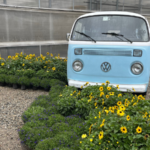
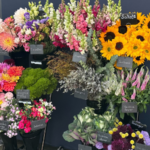
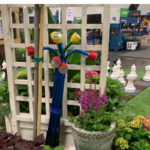
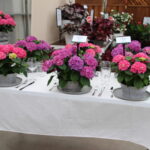



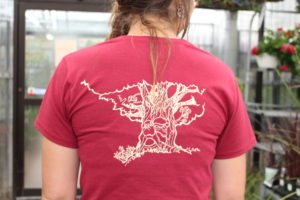


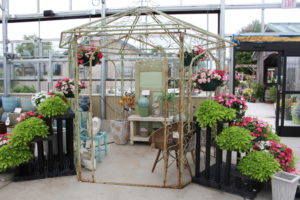

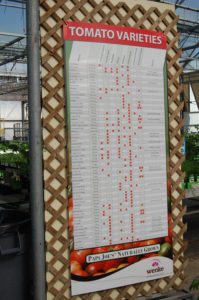
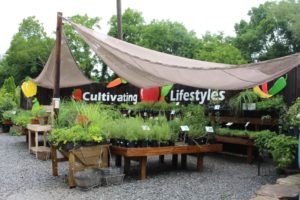
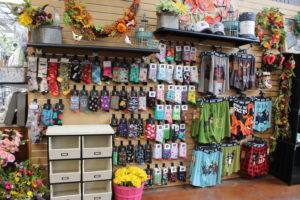
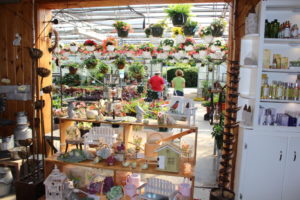
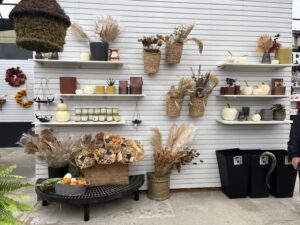
 Videos
Videos





